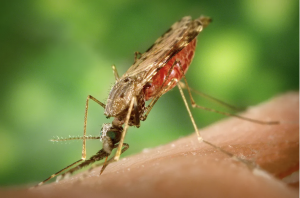Between 1 January 2024 and 16 February 2025, 26 confirmed cases of respiratory diphtheria and 27 asymptomatic carriers of toxigenic C. diphtheriae detected during contact tracing have been identified in South Africa. The majority of confirmed cases and carriers (94%, 50/53) were from the Western Cape, comprising 24 respiratory diphtheria cases and 26 asymptomatic carriers. The median age of cases of confirmed respiratory diphtheria was 28 years (range: 3–42 years), with 73% (19/26) aged over 18 years and the case-fatality ratio was 23% (6/26).
From 1 January 2024 to 16 February 2025, 179 individuals have been reported as suspected diphtheria cases and tested negative for toxigenic. diphtheriae. Alternate diagnoses became available for some of the individuals with suspected diphtheria, and included Streptococcus pyogenes, Corynebacterium spp NOT diphtheriae, Ludwig’s angina, retrobulbar abscess or respiratory viruses including SARS-CoV-2.
Highlights:
- In the last epidemiologic week (week 7), the following number of new cases were reported:
o 1 laboratory-confirmed case of toxigenic respiratory diphtheria in the Western Cape
o 7 asymptomatic carriers of toxigenic C. diphtheriae in the Western Cape
o No suspected respiratory diphtheria cases were reported from other provinces
Public health response has been initiated for each case.
Information for clinicians
Respiratory diphtheria is a vaccine-preventable illness caused by toxigenic C. diphtheriae (and more rarely C. ulcerans or C. pseudotuberculosis), and can occur in persons of all ages.
The clinical presentation includes the following signs and symptoms:
- sore throat
- low-grade fever
- AND an adherent membrane of the nose, pharynx, tonsils, or larynx (Figure 2) – the membrane is
greyish-white and firmly adherent to the tissue - AND/OR enlarged glands in the neck (bull neck)
- toxin-mediated systemic signs including myocarditis, polyneuropathy and renal damage
Patient management
Treatment includes antibiotics (azithromycin or penicillin) to clear the organism from the throat and prevent onward transmission, and diphtheria anti-toxin (DAT) to neutralise unbound toxin. The dosage of DAT is determined by the duration and severity of illness. Treatment, contact tracing and chemoprophylaxis should be started prior to laboratory confirmation. Early administration of DAT may be life-saving and should not be delayed in cases with a high index of suspicion. Supportive care is primarily aimed at airway management and includes providing oxygen, monitoring with electrocardiogram and intubation or performance of a tracheostomy if necessary.





